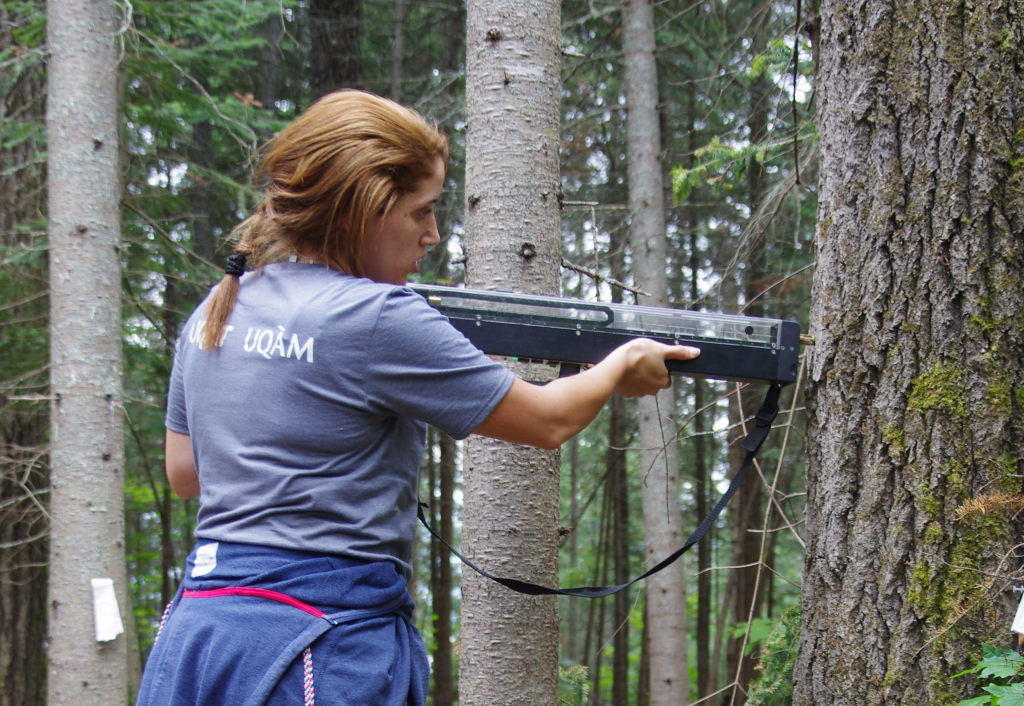Potential of the resistograph for studying wood quality

Wood quality depends on various parameters and attributes of the material. Wood density, which corresponds to the mass of a material per volume, is among the most studied properties for evaluating wood quality. However, the measurement of this property is time-consuming and used techniques, such as the X-ray densitometer, are expensive and requires a large number of samples.
The resistograph is a device for evaluating the condition of standing trees. This non-destructive measuring tool presents an alternative to estimate the volumetric mass density of wood by instantaneous measurements of the wood resistance to drilling, correlated to its density.
This study by the Renewable Materials Research Centre at the Université du Québec en Abitibi-Témiscamingue (CRMR-UQAT) demonstrates that the resistograph performs well in determining the intra-tree parameters of wood density. This performance is dependent on the ring width. For broad growth rings, the resistograph allows a precise determination of the transition point of the initial wood to the final wood. On the other hand, for rings where the transition is not distinct, the resistograph perceives a weak signal of resistance leading to a loss of information on some growth rings. This suggests that the resistograph is reliable for high growth rate trees that respond well to silvicultural treatments. This technique would allow engineers and scientists to timely and quickly evaluate the wood quality attributes of a stand. The resistograph is a decision-making tool for forest managers to judge the effects of silvicultural practices on wood quality at the tree and stand levels.
For more information, consult the Research Note.

